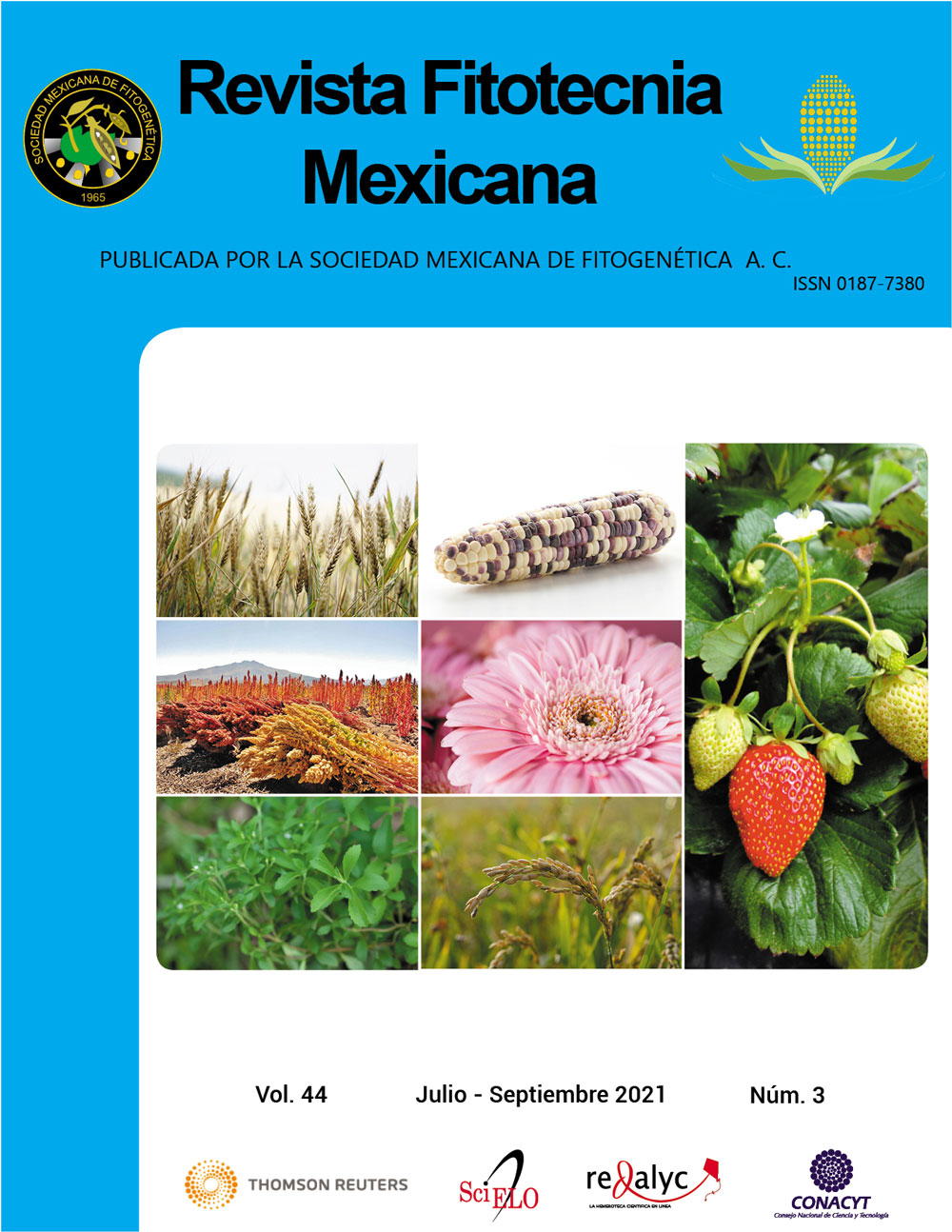EPIDEMIC DEVELOPMENT OF ASIAN SOYBEAN RUST UNDER THE ACTION OF FUNGICIDES AND CLIMATE VARIABLES
Main Article Content
Abstract
Soybean rust (Phakopsora pachyrhizi Sydow & Sydow), is a limiting factor for soybean [Glycine max (L.) Merril] production because it causes yield losses of up to 80 %. In Mexico there are few studies on the influence of fungicides on the epidemic development of the disease, its relationship with climate and the impact on yield. The objective of this study was to evaluate the effect of: a) pyraclostrobin + flutriafol, b) pyraclostrobin + epoxiconazole, and c) epoxiconazole on the soybean rust epidemic development as well as the impact of the disease on grain yield and the effect of climatic variables on the disease. Seven experiments were carried out over a three-year period in Altamira, Tamaulipas, Mexico. Significant differences (P ≤ 0.05) were only detected in the incidence and the area under the disease progression curve (AUDPC) with the application of pyraclostrobin + epoxiconazole, which decreased the incidence levels by 88 to 96 % and severity by 95 to 98 %; in addition, it prevented losses of grain yield by 11.2 to 25.6 %. The application of pyraclostrobin + flutriafol and epoxiconazole did not cause differences on severity and AUDPC of soybean rust compared to the control without fungicide application. Weather variables associated with a higher probability of rust occurrence were the number of hours with temperatures between 17.5 and32.5 º C, in combination with the number of hours with leaf moisture between 10 and 15 (scale 0 to 15) and with relative humidity higher than 70 %.

